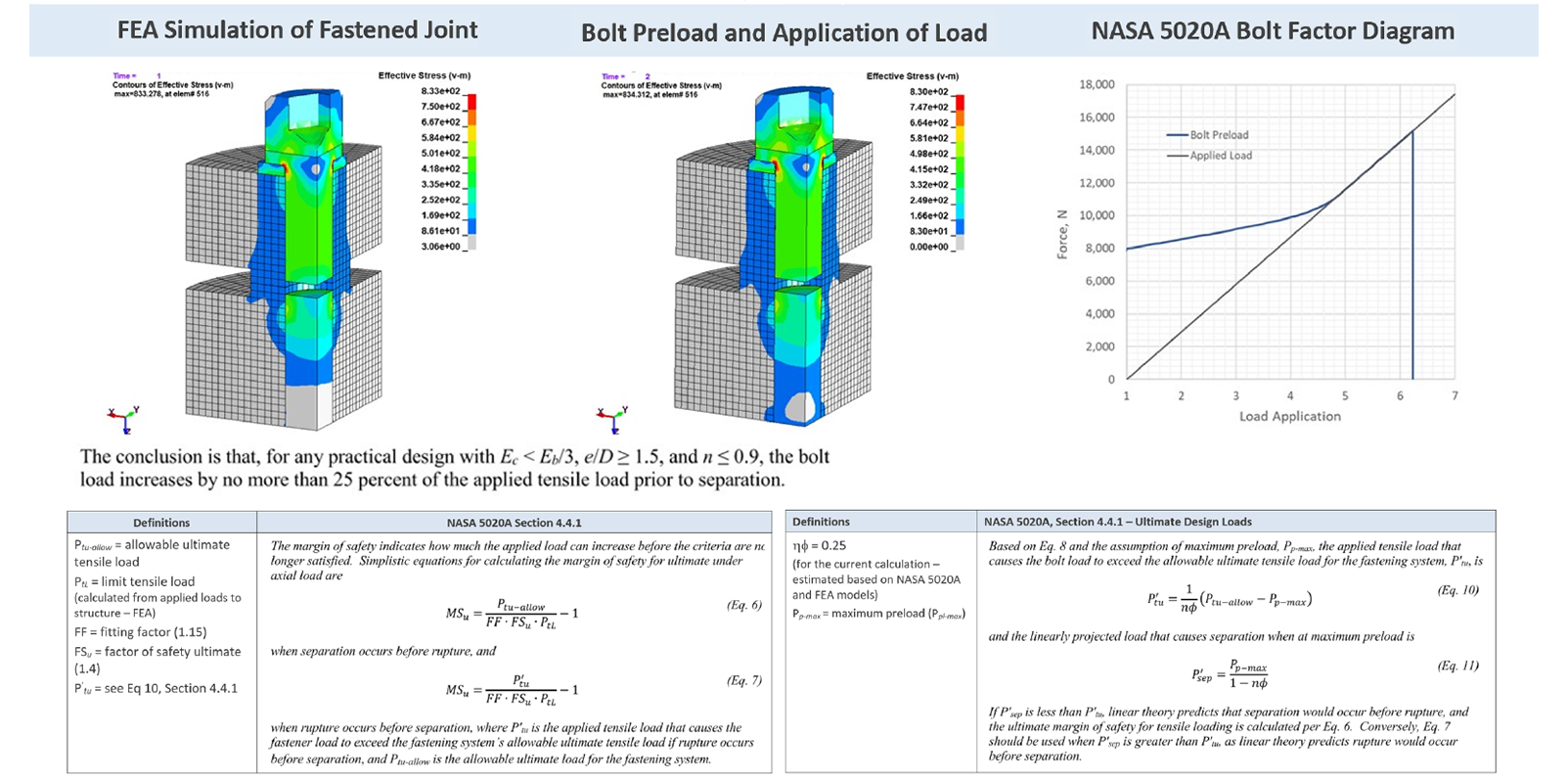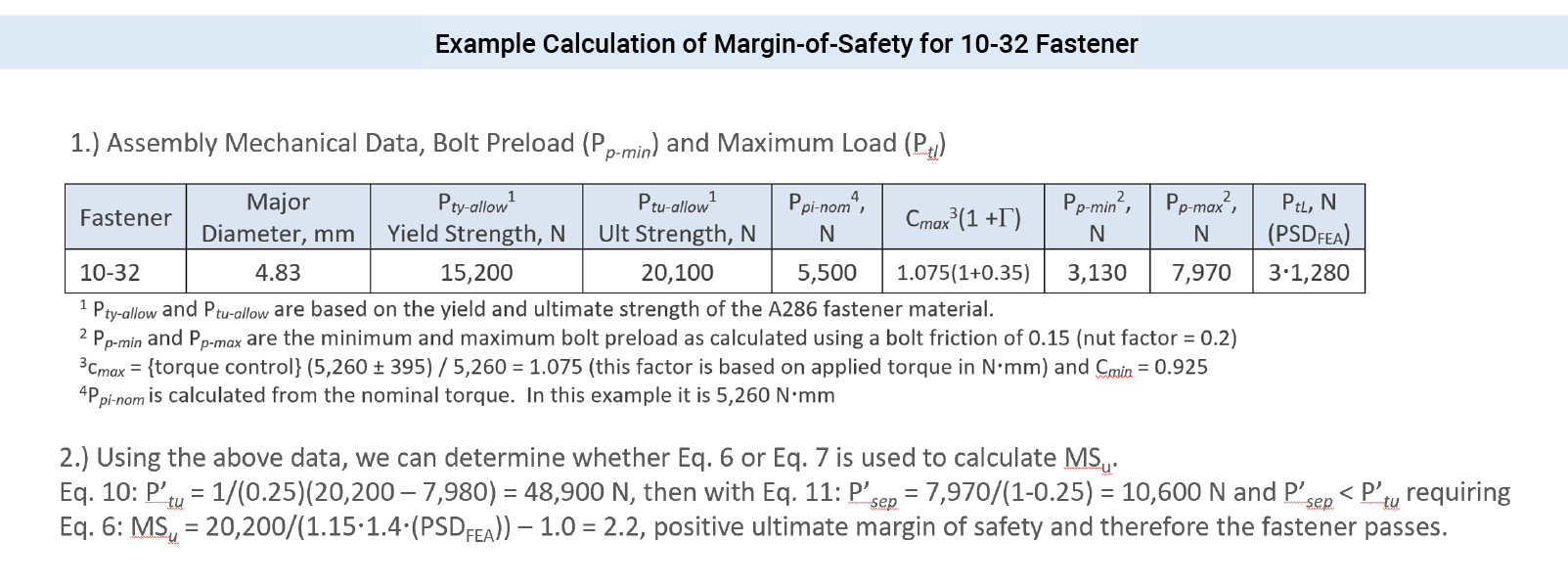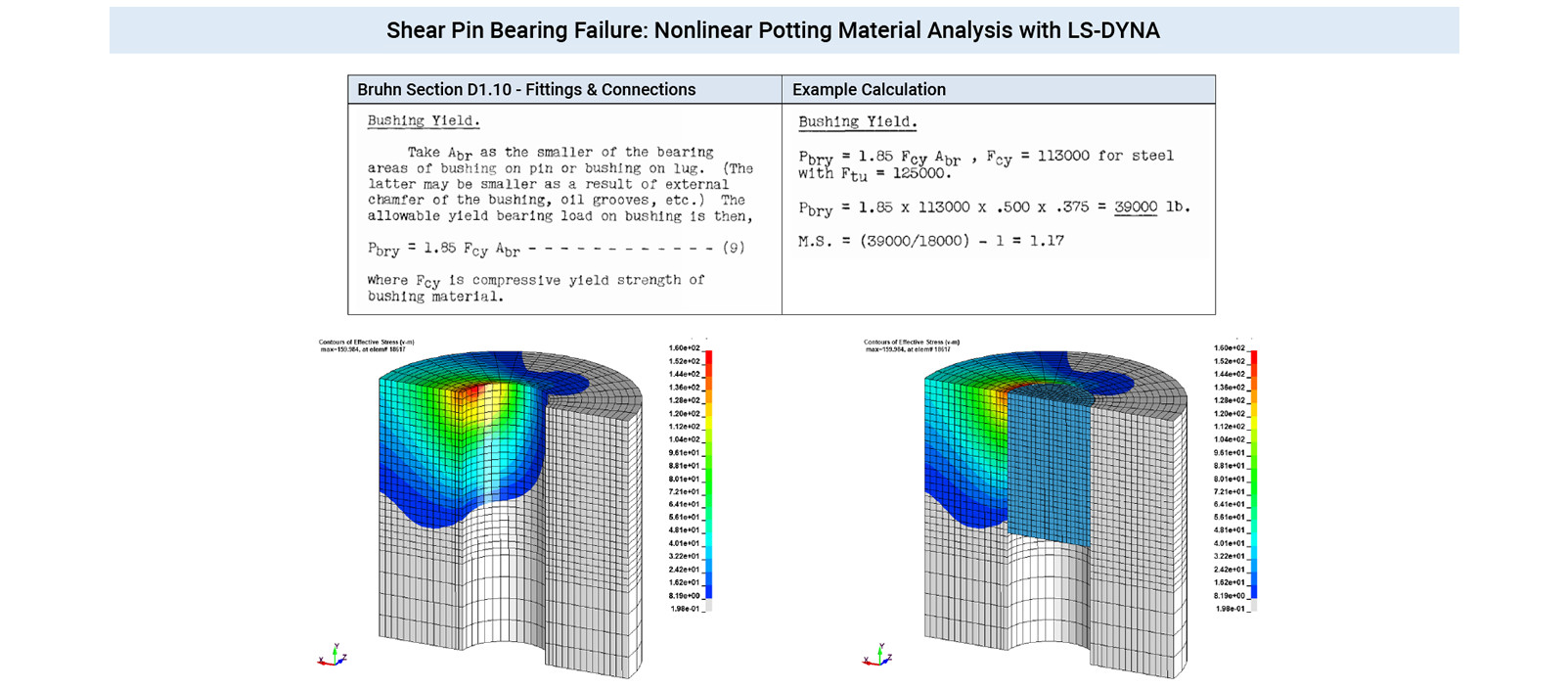NASA 5020A Requirements for Threaded Fastening Systems in Spaceflight Hardware

Analysis
Objective
Over the last decade, we have done numerous structural and thermal simulations of satellites for commercial and ITAR-type clients. Looking back, I’m sort of surprised how close we got with what we thought were FEA best practices for linear dynamics (that is to say, results based on a normal modes analysis from seismic to shock to PSD).
A big advance over the last couple of years has been our approach to fastener modeling. In prior work, fasteners were idealized using beams and rigid links, while nowadays, our preference is to use 6-DOF springs in combination with rigid links. While a bit messy, it provides an efficient methodology to meet the NASA 5020A Technical Specification. The gist of the NASA 5020A specification is to keep joints tightly joined under worst-case conditions with no or limited slip. This is done by combining the effects of fastener preload against that of the applied load or loads with conservative assumptions and factors of safety.
The specification is an algebraic joy to the mathematically inclined simulation engineer. In our project work, we were surprised to learn, that without shear pins, it is quite difficult to get a stand-along fastener to pass the NASA 5020A specification. Furthermore, although best practices often calls out maximum bolt preload, it can also lead to failing the 5020A specification. To provide some background, we’ll show a simple calculation that we did for a recent space-based optical platform.
Our takeaways from this work is that every fastener loves a shear pin and that high bolt preload is not necessarily your friend.
PDF Download
NASA 5020A Requirements for Threaded Fastening Systems in Spaceflight Hardware







